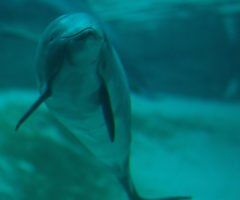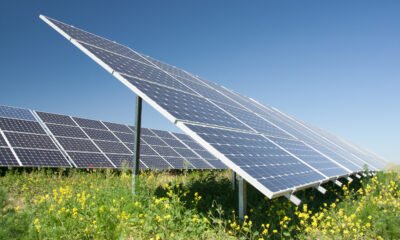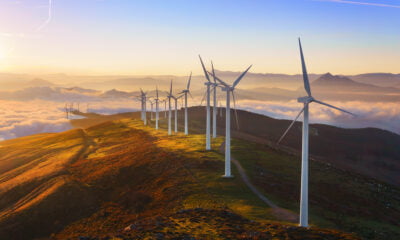

Environment
Offshore Wind Noise Reduction Having Positive Impact On Porpoise
According to a report published today, measures to cut down underwater noise could reduce the negative impact that offshore wind power development has on harbour porpoise populations in UK waters.
The research, conducted by SMRU Consulting exclusively for WWF-UK, used noise reduction scenarios to identify the benefits of reducing noise by set amounts, against a baseline of no noise reduction at all. The key finding is that noise reduction has great benefits for harbour porpoises, and a little goes a long way: if all wind farms reduced their construction noise levels by the equivalent of around 8dB, for example by using bubble curtains, the likelihood of a 1% annual decline in the North Sea population could be reduced by up to 96%.
WWF-UK’s Marine Governance Programme Manager Alec Taylor said:
“As we move towards a zero-carbon future, we must take the right steps to allow the maximum deployment of renewable energy at minimal cost to biodiversity.
“The expansion of wind power around our coastline is great news, but there will need to be some form of mitigation for harbour porpoises, which are acutely sensitive to noise. It’s therefore vital for both scientists and developers to know how reducing noise by different levels benefits porpoises, so that mitigation can be cost-effective. As this report shows, there are big benefits for easily-achievable noise reductions. These findings will help boost our clean energy supply without reducing our rich and fascinating marine biodiversity.”
As we move towards a zero-carbon future, we must take the right steps to allow the maximum deployment of renewable energy at minimal cost to biodiversity.
Harbour porpoises are under increasing pressure from fishing by-catch and pollution, as well as noise and disturbance from offshore development.
Underwater noise affects harbour porpoises in two main ways: at really loud levels, it can cause injury or even death. More usually, porpoises and other cetaceans will change their behaviour or avoid areas with even relatively low noise levels, usually for between 1 and 3 days after a noise event. If these events continue, this can lead to the abandonment of large areas for weeks or even months. In the case of the recently-consented Hornsea 2 wind farm off the Yorkshire coast, for example, extra conditions were placed on the developer to demonstrate beforehand how they intended to keep the noise levels down during construction.
Noise reduction can involve altering piling schedules or installing technology to reduce the noise travelling out from the source. This includes the use of bubble curtains, air-filled tubes or hydro-sound dampers. This report is based on the results of tested technology and allows for potentially more challenging UK conditions.
A well-managed network of Marine Protected Areas (MPAs), where human activity is strictly controlled, is one of the best tools to protect habitats and species. Establishing MPAs with clearly-defined environmental standards also provides certainty to investors and drives improvements in technology to reduce wider environmental impacts.


 Features10 months ago
Features10 months agoWhat is the Eco-Friendliest Option to Wash Your Dishes?

 Environment12 months ago
Environment12 months agoBuilding a Career in Green Construction: Tips and Insights

 News11 months ago
News11 months ago5 Ways Fleet Maintenance Software Can Help Businesses Be More Eco-Friendly

 Features10 months ago
Features10 months agoAddressing Pressing Ethical Concerns with Crypto Exchanges




























